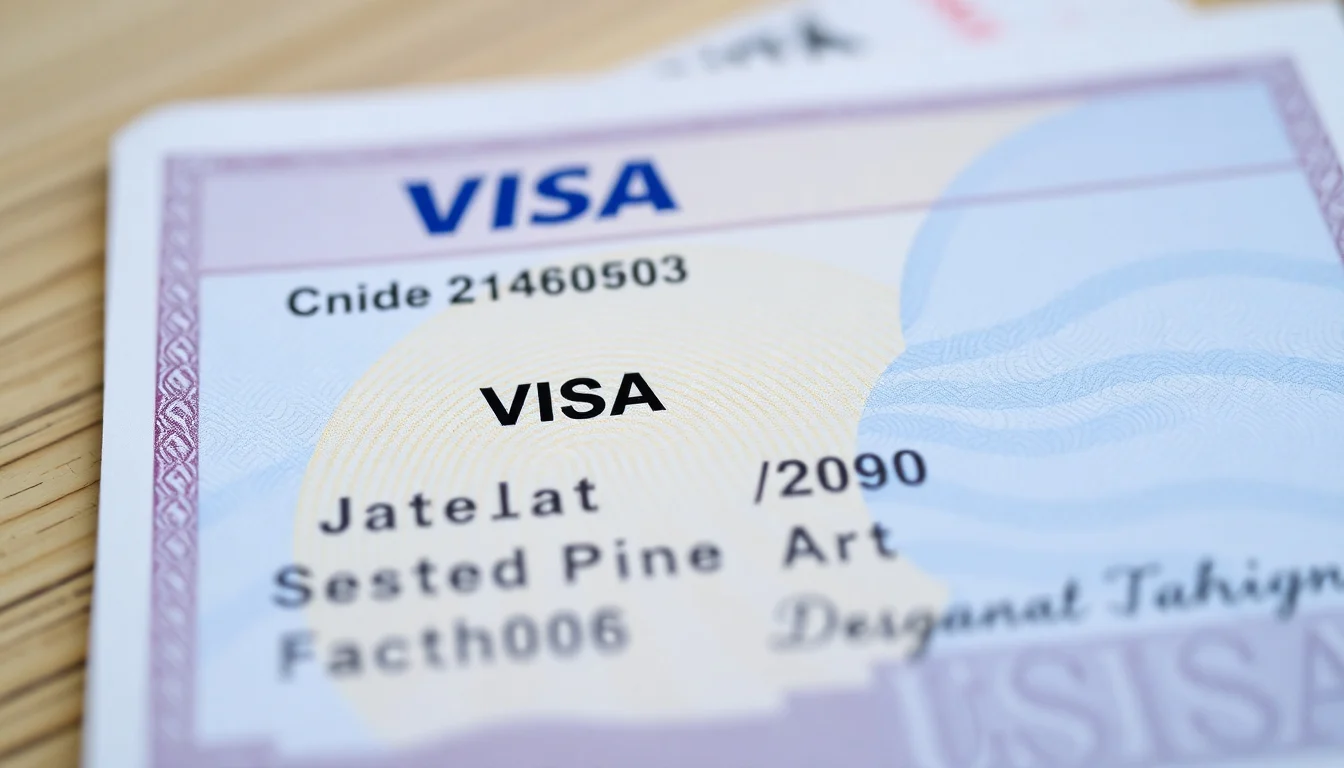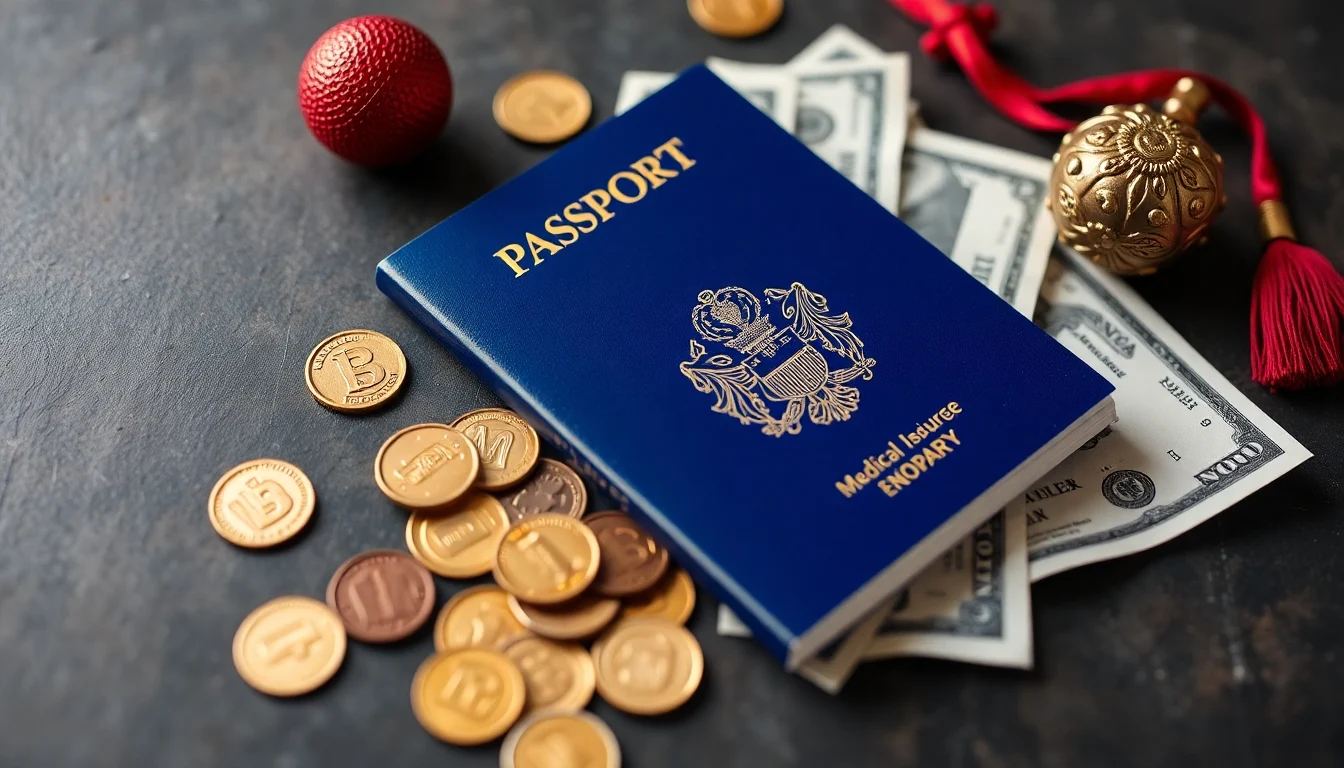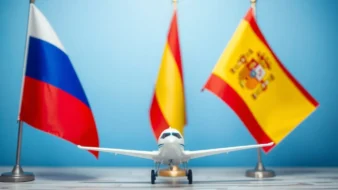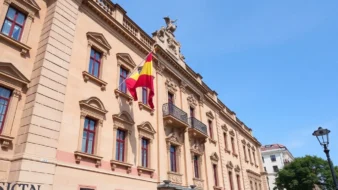Complete Guide to Getting a Visa for Spain This Year
This year, obtaining a visa for Spain has become more complicated due to stricter requirements for financial guarantees and documents supporting the purpose of the trip. Tourists need to provide a detailed itinerary, accommodation bookings, and tickets, workers require an employment contract, students need an invitation from the educational institution, entrepreneurs and freelancers need to provide proof of stable income (the most complicated part due to the verification of the legality of funds), and property owners have the easiest process—just the property documents and basic financial guarantees are required (simplified thanks to clear legal status). The process generally involves collecting documents, scheduling an appointment with a visa center or consulate, submitting biometrics, waiting for a decision, and requires thorough preparation and attention to detail. Let’s break down all the nuances.
 Applicants seeking visas for various purposes are offered four types of visas: Schengen Visa Category C (for short-term trips up to 90 days), National Visa Category D (for long-term stays exceeding 90 days), Transit Visa (for transfers at Spanish airports), and the C Visa for Property Owners (for property owners).
Applicants seeking visas for various purposes are offered four types of visas: Schengen Visa Category C (for short-term trips up to 90 days), National Visa Category D (for long-term stays exceeding 90 days), Transit Visa (for transfers at Spanish airports), and the C Visa for Property Owners (for property owners).
 The cost of obtaining a visa for Spain involves several expenses: consular fee, service fee, and additional costs. Below are the current figures to help you immediately assess the cost and plan your budget.
Consular Fee:
The consular fee is the fee for processing the application by the Spanish consulate, and it is non-refundable in case of refusal. The prices are as follows:
The cost of obtaining a visa for Spain involves several expenses: consular fee, service fee, and additional costs. Below are the current figures to help you immediately assess the cost and plan your budget.
Consular Fee:
The consular fee is the fee for processing the application by the Spanish consulate, and it is non-refundable in case of refusal. The prices are as follows:
 Preparing documents is a key step in obtaining a visa for Spain. How well you prepare all the necessary information will determine the speed of processing and the likelihood of approval. Applicants sometimes forget important details, leading to refusals or delays. Let’s break down what you’ll need.
Basic Document Package
For any type of visa, you will need the following set of documents:
Preparing documents is a key step in obtaining a visa for Spain. How well you prepare all the necessary information will determine the speed of processing and the likelihood of approval. Applicants sometimes forget important details, leading to refusals or delays. Let’s break down what you’ll need.
Basic Document Package
For any type of visa, you will need the following set of documents:
Go back to the blog
Types of Spanish Visas and Their Features
 Applicants seeking visas for various purposes are offered four types of visas: Schengen Visa Category C (for short-term trips up to 90 days), National Visa Category D (for long-term stays exceeding 90 days), Transit Visa (for transfers at Spanish airports), and the C Visa for Property Owners (for property owners).
Applicants seeking visas for various purposes are offered four types of visas: Schengen Visa Category C (for short-term trips up to 90 days), National Visa Category D (for long-term stays exceeding 90 days), Transit Visa (for transfers at Spanish airports), and the C Visa for Property Owners (for property owners).
Schengen Visa Category C
A Schengen Visa Category C is required for tourism, business trips, visits to relatives, short-term courses (e.g., a holiday in Barcelona, a conference in Madrid, a family gathering, language courses). The validity is up to 90 days within a 180-day period. It can be issued for a single, double, or multiple entries. To obtain a Schengen Visa Category C:- Passport: Valid for at least 3 months with two blank pages.
- Visa application: Completed online, printed, and signed.
- Photographs: Two color photos (3.5 x 4.5 cm), on a light background, taken within the last 6 months.
- Proof of purpose: Hotel booking, invitation from an individual or company.
- Financial guarantees: Bank statement for the last 3 months (at least 100 euros per day), employment confirmation with salary details.
- Medical insurance: Coverage of at least 30,000 euros for the entire stay.
- Tickets: Round trip or booking confirmation.
National Visa Category D
This visa type is for stays longer than 90 days. It’s ideal for students (invitation from a university), workers (employment contract), family members of Spanish citizens (reunion), and entrepreneurs (running a business). Requirements include:- Passport: Valid for the entire duration of the visa, with two blank pages.
- Visa application: Completed in Spanish or English, signed.
- Photographs: Two color photos (3.5 x 4.5 cm), on a light background.
- Proof of purpose: Employment contract, invitation from an educational institution, proof of family relationship.
- Financial guarantees: Bank statement, sponsor letter.
- Medical insurance: For long-term stay.
- Criminal record certificate: Apostilled and translated into Spanish.
Transit Visa
A transit visa is for travelers passing through Spain to a third country who need to leave the international transit area of the airport. For example, if you are traveling from Moscow to Andorra via Barcelona Airport, and you need to leave the airport to take a bus to Andorra (exiting the transit zone requires permission). To apply, you need:- Passport: Valid for at least 3 months.
- Visa application: Completed online, signed.
- Photographs: Two color photos (3.5 x 4.5 cm).
- Tickets: For the entire journey with confirmation of the transfer.
- Visa for the destination country: If required.
Visa for Property Owners
This C visa is for property owners in Spain and their families, allowing them to visit the country to reside in their property. The Spanish visa is valid for up to 90 days within a 180-day period. It is issued for a single, double, or multiple entries. To apply, you need:- Passport: Valid for at least 3 months.
- Application form: Completed online, signed.
- Photographs: Two color photos (3.5 x 4.5 cm).
- Property documents: Extract from the property register ("Nota Simple Informativa").
- Financial guarantees: Bank statement.
- Medical insurance: For the entire duration of stay.
Visa Processing Costs This Year
 The cost of obtaining a visa for Spain involves several expenses: consular fee, service fee, and additional costs. Below are the current figures to help you immediately assess the cost and plan your budget.
Consular Fee:
The consular fee is the fee for processing the application by the Spanish consulate, and it is non-refundable in case of refusal. The prices are as follows:
The cost of obtaining a visa for Spain involves several expenses: consular fee, service fee, and additional costs. Below are the current figures to help you immediately assess the cost and plan your budget.
Consular Fee:
The consular fee is the fee for processing the application by the Spanish consulate, and it is non-refundable in case of refusal. The prices are as follows:
- Schengen Visa Category C for adults — 90 euros, for children (6-12 years old) — 45 euros, for children under 6 years old — free.
- National Visa Category D costs 90 euros for all categories.
- Transit Visa: For adults — 90 euros, for children 6–12 years old — 45 euros, for children under 6 years old — free.
- Property Owner Visa is processed as a Schengen Visa Category C, so 90 euros for adults, 45 euros for children 6–12 years old, and free for children under 6 years old. Payment in rubles is accepted at the consulate at the exchange rate on the day of submission.
- Medical Insurance — 500–2000 rubles. Required for all types of visas to cover potential medical expenses abroad.
- Photographs — 200–300 rubles. These are needed for the application form and must meet standards (size, background).
- Document Translation — 500–4500 rubles per page. Required for Visa D, as the consulate accepts documents in Spanish or English (depending on the visa type and translation).
- Notarization — 500–2000 rubles. Necessary for legally significant documents, such as consent for a child to travel or a sponsor letter.
- Courier Delivery — 500–1000 rubles. Practical if you cannot pick up your passport with the visa in person.
- Bookings and Certificates — 0–500 rubles. Hotel and flight bookings can be made for free through cancellation services, but paid confirmations may cost up to 500 rubles.
Necessary Document Packages for Obtaining a Visa
 Preparing documents is a key step in obtaining a visa for Spain. How well you prepare all the necessary information will determine the speed of processing and the likelihood of approval. Applicants sometimes forget important details, leading to refusals or delays. Let’s break down what you’ll need.
Basic Document Package
For any type of visa, you will need the following set of documents:
Preparing documents is a key step in obtaining a visa for Spain. How well you prepare all the necessary information will determine the speed of processing and the likelihood of approval. Applicants sometimes forget important details, leading to refusals or delays. Let’s break down what you’ll need.
Basic Document Package
For any type of visa, you will need the following set of documents:
- Passport: Should be valid for at least 3 months after the end of the trip (for Schengen Visa C) or until the end of the visa (for Visa D). The passport should have at least two blank pages.
- Application form: Completed online on the visa center or consulate website, then printed and signed.
- Photographs: Two color photos (3.5 x 4.5 cm), taken no earlier than 6 months before submission.
- Medical Insurance: For a C visa — coverage of at least 30,000 euros, valid for the entire stay in the Schengen Area. For Visa D — insurance for long-term stay from a Spanish insurance company.
- Financial guarantees: Bank statement for the last 3 months (minimum 100 euros per day per person) or a letter from the employer with salary and vacation dates.
- Proof of Purpose: For example, hotel booking, invitation, or property certificate — depending on the visa type.
Additional Information
Depending on the visa type, the following documents are added to the basic package:- Schengen Visa Category C (tourism, business trips):
- Hotel booking or invitation from a private individual.
- Round-trip tickets (or their booking).
- For business trips — invitation from a Spanish company.
- For tourism — a travel itinerary with dates and places of stay.
- National Visa Category D (work, study):
- Employment contract or invitation from the educational institution.
- Criminal record certificate with an apostille and translation into Spanish.
- Medical certificate of absence of dangerous diseases.
- Proof of accommodation (rental or property agreement).
- Transit Visa:
- Tickets for the entire journey.
- Visa for the destination country (if required).
- Visa for Property Owners:
- Property register extract ("Nota Simple").
Photo Requirements
The photos for the visa must meet strict standards:- Size: 3.5 x 4.5 cm
- Background: Plain light color (white or light gray)
- Face: Should occupy 70-80% of the frame, with no shadows, looking directly at the camera, and with a neutral expression
- Glasses: Only allowed if they do not cause glare and do not cover the eyes
- Head coverings: Only for religious reasonsIt is recommended to have your photo taken in a professional studio to avoid issues with non-compliance.
Application Form Filling Tips
The application form is one of the most important documents, and errors in it could cost you your visa. Pay attention to the following:- Language: The form should be filled out in English or Spanish.
- Data: Your details should exactly match the information in your documents.
- Signatures: Sign in two places: in section 37 and at the end of the application.
- For a Type C visa, it is helpful to include an itinerary.Example of an itinerary:Date | City | Hotel01.07.2024 | Barcelona | Hotel Arts Barcelona 03.07.2024 | Valencia | Westin Valencia This is an ideal itinerary for a Type C visa: it includes exact dates, cities, and hotel names with booking confirmation. We recommend contacting a visa specialist to verify your application and documents. In the end, it is cheaper, faster, and more convenient than dealing with all the details on your own.
Submission Process
Appointment with the Visa Center
For a Schengen Type C visa and some other types, submission is through the BLS International visa center. For Type D visas, submission is through the consulate. To book an appointment, visit the BLS website, select your region and visa type (e.g., "Schengen Visa"), register (you’ll need an email and password), and schedule a time (slots fill up during the summer, so book 2-3 weeks in advance). Bring a printed confirmation with a barcode, which will be emailed to you. If the website is slow, try using a different browser or incognito mode.Biometric Data Submission
Biometric submission takes 10-15 minutes at the BLS visa center or the consulate. You will provide fingerprints and take a digital photo—schedule your appointment online or check with the center staff. Children under 12 are not required to provide fingerprints but must have a photo. Refusal to provide biometric data will result in a visa refusal. Check in advance whether you need to resubmit biometrics (fingerprints are stored for 59 months).Processing Time
Processing times vary by visa type:- Type C visa: 10-15 business days, up to 30 days during peak season
- Type D visa: 1-3 months
- Transit visa: 10-15 business days
- Visa for property owners: 10-15 business daysIt is recommended to submit your application a month before your planned trip to allow for possible delays.
Visa Application for Different Categories
Each category of applicants—children, retirees, freelancers, self-employed individuals, and students—faces unique requirements when applying for a Spanish visa. Below we discuss these in detail and also look at common reasons for refusals and how to avoid them.Visa for Children
Children, even if included in a parent’s passport, must have their own visa—either a short-stay Schengen Type C visa or a long-term national Type D visa. The following documentation is required:- Birth certificate (original and notarized copy)
- Parental consent for travel (notarized) if the child is traveling with one parent or a third party
- Sponsorship letter from the parents with financial statements (e.g., bank statements) if the child does not have their own fundsChildren under 12 are not required to provide fingerprints but must provide a photo. We recommend submitting the child’s documents together with those of the parents, as this simplifies the process and reduces the likelihood of questions from the consulate.
Visa for Retirees
Retirees can apply for a visa to Spain if they can prove their financial independence. Required documents:- Pension certificate
- Bank statement confirming available funds, or a sponsorship letter from relatives with financial guaranteesIf the pension is low, the consulate may request additional proof such as savings, property documents, or family support. For modest pensions, include a sponsorship letter from children or close relatives with their passport details.
Visa for Freelancers and Self-Employed Individuals (SEI)
Freelancers and SEIs must prove the stability of their income and the legality of their business. Required documents:- For SEI: Extract from the Unified State Register of Individual Entrepreneurs (EGRIP), tax identification number (INN) certificate, and last year’s tax declaration
- For freelancers: Contracts with clients, bank statements showing regular deposits
- Bank statement for the last 3 months showing the movement of fundsThe consulate carefully checks the financial stability of these applicants. It’s better to order your EGRIP extract in advance to avoid delays in submitting your documents, as its preparation may take several days.
Visa for Students
Students planning to study or take short courses in Spain must prove the purpose of their trip and their financial support. Required documents:- Invitation letter from the educational institution and enrollment certificate
- Financial guarantees (e.g., a bank statement from parents or a sponsorship letter)
- Medical insurance for the entire stay (especially for Type D visa)The educational institution must be accredited in Spain. Ensure that the invitation includes the study duration, address, and the signature of the responsible person.
Common Reasons for Visa Refusal and How to Avoid Them
Visa refusals can be prevented by avoiding typical mistakes and meeting the consulate’s requirements. Let’s explore the main issues and solutions.Common Document Mistakes
An incomplete document package or mistakes in the application form are among the most common causes of refusal. To avoid this:- Double-check the application form. All data must match your passport, and signatures must be placed in the correct sections.
- Make sure that translations of all valuable documents into Spanish are notarized by the consulate.
- Attach copies of all pages of your passport, including the blank ones.Of course, it’s easiest to trust a visa specialist to check your application. They can spot errors, advise on corrections, and save you time and stress—this is better than trying to handle everything yourself.
Failure to Meet Financial Requirements
The consulate requires proof that you have sufficient funds for your stay in Spain. To avoid issues:- Show a bank statement with a balance of at least €100 per day of your trip (minimum €900 per person).
- If your funds are insufficient, provide a sponsorship letter and documents from the sponsor (bank statements, employment certificates).
- For long-term Type D visas, additional proof of stable income or savings is required.
- Provide more financial statements than required to increase the consulate’s trust in your application.
Issues with Your History
Previous refusals or violations of visa conditions can complicate the approval of a new visa. To avoid this:- If you have had refusals, include an explanatory letter outlining the reasons and evidence of rectifying the situation.
- Show your ties to your home country—employment certificates, property documents, family status.
- Ensure you haven’t overstayed in previous visa periods.
- Clearly outline the purpose of your trip and include as many supporting documents as possible (hotel reservations, tickets, invitation letter).
Practical Tips and Recommendations
To ease the visa application process for Spain, gather a complete set of documents, confirm your financial solvency accurately, arrange bookings, and plan your first entry. Here are some practical tips to help you:Booking Flights and Hotels
Booking is often required for a visa, but buying tickets in advance can be risky. Applicants often lose money on non-refundable tickets if they are refused a visa. To avoid this:- Book a hotel with free cancellation via services like Booking.com—this is a safe and convenient option.
- For flights, use bookings without payment (some airlines offer this service for 24-48 hours) or request a booking confirmation letter from a tour operator.
- For a student Type D visa, paying for accommodation during the study period is not mandatory, but having it can strengthen your application, showing serious intent.
- Avoid purchasing non-refundable tickets before receiving your visa to minimize financial risks.
Confirming Financial Solvency
The consulate needs to know that you won’t run out of funds while in Spain. To prove this:- Provide a bank statement for the last 3 months showing active transactions—this is the primary document.
- Show credit cards with limits or property documents as additional proof of financial stability.
- For SEI and freelancers, add tax returns and client contracts—the consulate will evaluate your income.
- The more information you provide about your income and assets, the stronger your application will be.
First Entry Requirements
For a Schengen visa, it is important to organize your first entry properly. How to do this:- If Spain issued your visa, your first entry or exit must be through Spain.
- Keep all travel documents (tickets, boarding passes, receipts) in case of checks by border officials or the consulate during future submissions.
- For a Type D visa, obtain a resident card (TIE) within 30 days of entry.
- Plan your route so that Spain is the main country of stay by time—otherwise, there’s a risk of visa cancellation.
Conclusion
In conclusion, there are four types of visas for Spain: Schengen Type C (up to 90 days—tourism, business), National Type D (over 90 days—work, study), Transit visa (short layovers—up to 5 days), and Property owner visa (up to 90 days in 180 days—staying in your own property). Key details:- Schengen Type C requires first entry or exit through Spain and strict adherence to time periods.
- National Type D is a long-term visa, and a TIE card must be obtained after entry.
- Transit is for short layovers.
- Property owner is confirmed with property documents.


 06/05/2025
06/05/2025  Reading time: 3 min
Reading time: 3 min 



